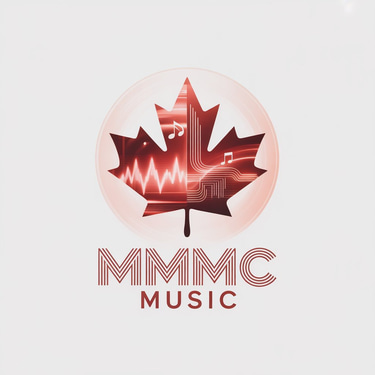The Evolution of AI in Music
From Early Experiments to Modern Innovation
EDITORIAL & OPINIONS
1/2/20253 min read


The intersection of artificial intelligence (AI) and music has a rich history spanning several decades, evolving from simple algorithmic compositions to today's sophisticated AI music generators. This evolution reflects both technological advancement and changing attitudes toward computer-assisted creativity.
Early Foundations (1950s–1980s)
The Birth of Algorithmic Composition
The first experiments with computer-generated music began in the 1950s, with pioneers like Alan Turing and Lejaren Hiller paving the way for computational creativity. In 1951, Alan Turing recorded the first computer-generated music using a machine at the Computing Machine Laboratory in Manchester. This was followed by the Illiac Suite for String Quartet in 1957, composed by Lejaren Hiller and Leonard Isaacson using the ILLIAC (Illinois Automatic Computer). The suite demonstrated that computers could follow musical rules to create structured compositions.
Stochastic Music and Mathematical Models
During the 1960s and 1970s, composers like Iannis Xenakis and Pierre Barbaud explored stochastic music methods, applying probability and mathematical algorithms to create unpredictable yet structured musical pieces. These works were crucial in proving that machines could introduce randomness into creative processes.
The MIDI Revolution (1980s–1990s)
A New Language for Machines and Instruments
The introduction of MIDI (Musical Instrument Digital Interface) in 1983 was a game-changer for AI music development. MIDI standardized the way computers communicated with electronic instruments, enabling precise control over musical parameters.
Key outcomes of the MIDI revolution included:
The rise of Digital Audio Workstations (DAWs) for precise editing and production.
Sophisticated algorithmic composition tools capable of generating complex musical arrangements.
Early experiments with neural networks in music generation.
Machine Learning Emergence (2000s–2015)
AI Meets Music Algorithms
With advancements in machine learning, AI's role in music became more nuanced. Researchers began experimenting with:
Markov Chains for generating melodic and harmonic sequences.
Support Vector Machines (SVMs) for recognizing and replicating musical styles.
Early Deep Learning Models for generating harmonies and rhythms.
Companies like Pandora and Spotify also began leveraging AI for personalized music recommendations, demonstrating AI's ability to analyze listener behavior and preferences.
Deep Learning Revolution (2015–2020)
AI as a Music Creator
The deep learning boom brought groundbreaking projects and tools:
Google's Magenta Project (2016): Focused on creating neural network-based compositions.
OpenAI's MuseNet (2019): Showed the potential to generate multi-instrumental compositions across genres.
Amper Music and AIVA: Commercial tools enabling creators to collaborate with AI in composing tracks.
These platforms marked the transition of AI music from experimental research to accessible creative tools.
The Modern Generation (2020–Present)
The Rise of Suno and Udio
The last few years have seen an explosion of AI music technology, with text-to-music systems allowing users to create entire compositions from simple text prompts.
Suno
Founded in Cambridge, Massachusetts, Suno has rapidly grown its user base and valuation. Features of Suno's latest version, Suno V4, include:
Cleaner audio and sharper lyrics.
"Lyrics by ReMi" for enhanced songwriting.
Persona-based vocal styles.
Remastering tools for older tracks.
Udio
Udio emphasizes democratizing music creation, allowing users to craft intricate pieces with intuitive controls. CEO David Din has expressed hope that these tools will encourage more people to become music creators rather than passive consumers.
Key Innovations of Modern AI Platforms:
Natural Language Processing (NLP) for understanding user prompts.
High-Quality Audio Synthesis for instrument and vocal replication.
Style Transfer Techniques to emulate specific artistic aesthetics.
Impact and Controversies
Legal and Copyright Challenges
Major record labels have filed lawsuits against AI platforms like Suno and Udio, accusing them of unauthorized use of copyrighted music for training AI models. This raises critical questions about ownership and intellectual property rights.
Job Displacement Concerns
The use of AI in creating background music for commercials, podcasts, and games has fueled debates about whether AI might displace human composers and session musicians.
Creative Expansion
While some see AI as a threat, others view it as an expansive creative tool. AI allows creators to break boundaries and experiment with styles and genres previously inaccessible.
Cultural Implications
Critics worry about homogenization of music if AI training datasets lack cultural diversity. Ensuring diverse training data remains a key challenge.
Future Implications
Creative Industry Impact
Will AI tools replace or complement human composers?
How will copyright laws adapt to address AI-generated works?
What new roles might emerge in AI-assisted music production?
Artistic Expression
Will AI inspire entirely new genres of music?
How might collaboration between humans and AI evolve creatively?
Technical Evolution
Integration with Virtual and Augmented Reality (VR/AR).
Real-Time Adaptive Music for interactive media and gaming.
Enhanced emotional and contextual understanding in AI-generated music.
Conclusion
The evolution of AI in music is not a sudden revolution but a natural progression spanning decades of innovation. From the Illiac Suite to platforms like Suno and Udio, each milestone has built upon the last. As AI becomes an integral part of music creation, it holds the potential to reshape how we experience, create, and share music, all while challenging traditional notions of creativity and authorship.
The story of AI in music is far from over—it's just beginning to hit its crescendo.
